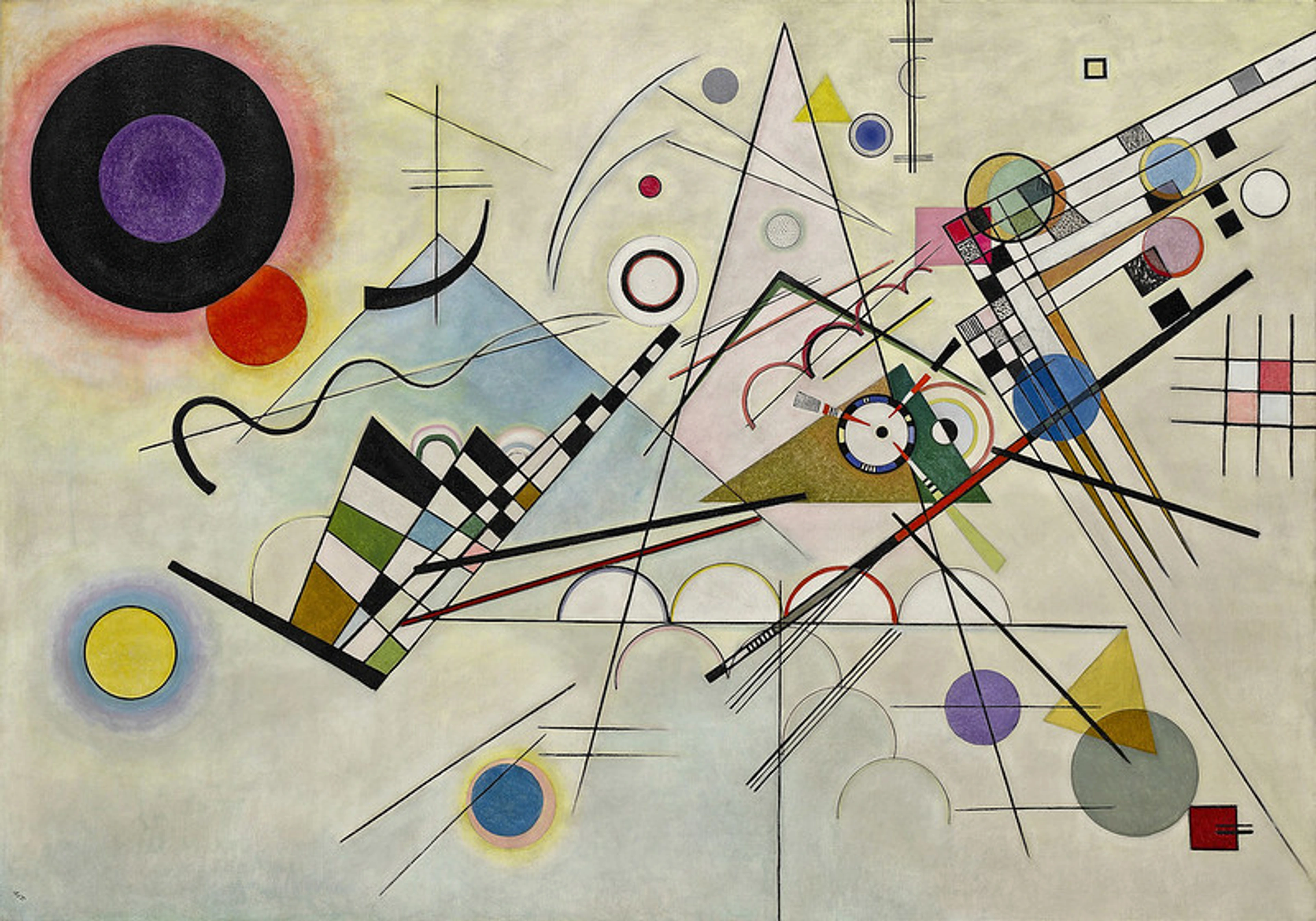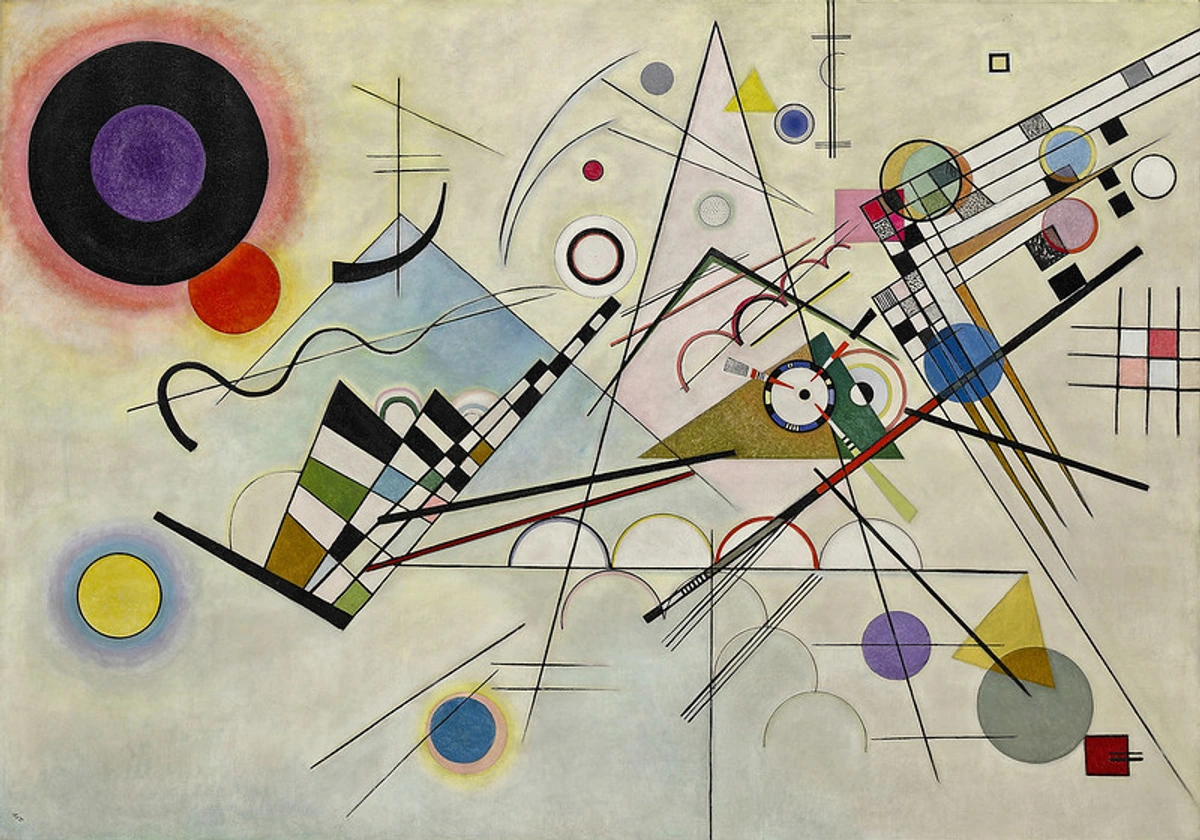
Why I Paint Abstract: An Artist's Intimate Journey & Vision
Dive into my world of abstract art. Explore my personal philosophy, intuitive process, and how I find meaning in colors, forms, and the beautiful mess of creation.
Why I Paint Abstract: An Artist's Intimate Journey & Vision
For me, painting abstract isn't merely a style; it's a profound, often chaotic conversation, a perpetual challenge, and if I'm being honest, sometimes a glorious, paint-splattered mess that only truly makes sense to me (and perhaps my studio cat). If you've ever stood in front of an abstract piece and felt a pull you couldn't quite explain, or maybe even a chuckle of confusion, then you're already halfway to understanding my world. I paint abstract because it allows me to speak a language without words, a language of pure feeling and raw experience, a dialogue between my inner world and the canvas, hoping to spark a similar resonance within you.
Like many artists, I started with the earnest, perhaps naive, idea of depicting the world exactly as my eyes perceived it. Landscapes, portraits, still lifes – I dabbled in them all, chasing that elusive perfect rendition. But beneath the surface, there was always this persistent itch, a feeling that I was putting a cage around something that inherently wanted to be wild, untamed. It felt like trying to capture a magnificent, free-roaming bird in a perfectly manicured, restrictive garden – beautiful, yes, but missing its true spirit, its essence. Abstract art, for me, is about capturing that essence before it evaporates, before logic tries to pin it down.
It's a journey artists have explored for over a century, pioneered by visionaries like Wassily Kandinsky who first truly broke free from objective representation, paving the way for a boundless exploration of inner landscapes. While my path is uniquely mine, I draw immense inspiration from this rich heritage of history of abstract art and abstract thought.
The Liberation of Non-Representation
There's a profound freedom in stepping away from the literal. When you're not bound by the need to represent a tree or a face, the canvas transforms into an open playground for intuition and emotion. It's a place where colors can scream or whisper, where lines can dance or meander, without the constraints of reality.
Now, I know what some might think: "My kid could do that," or "It's just random splashes of paint." And believe me, I've heard it all. But beneath the apparent chaos lies a deep intentionality, a profound wrestling match with composition, balance, and emotional truth. It's not about being easy; it's about being honest in a way that literal depiction often can't be. It’s not just about what you don't paint; it’s about what you do paint – the raw energy, the subconscious thoughts, the feelings that don’t have a name. For a deeper dive into how this kind of art resonates, you might find my thoughts on what makes abstract art compelling insightful. It's a journey, not a destination, and sometimes, the best part is the unexpected detours.

Much like the raw, unbridled energy seen in a bold abstract expressionist painting, this liberation allows me to delve into universal human experiences – joy, sorrow, confusion, tranquility – in a way that transcends specific forms. It’s about tapping into that shared subconscious, creating something that resonates on a primal level, even if we can't quite articulate why. This profound freedom from the literal then naturally leads me to my primary tools for expression: the vibrant, boundless language of color and form.
A Dialogue with Color and Form
My artistic vision often begins with a whisper of a feeling or a memory, rather than a concrete image. It could be the chaotic energy of a busy city street, the quiet solitude of a winter morning, or the bittersweet echo of a long-lost dream. These aren't things you can photograph; they're sensations.
For instance, the frantic, almost overwhelming energy of a bustling city street might translate into a canvas dominated by jagged, overlapping crimson and charcoal lines, punctuated by a surprising, almost defiant splash of electric blue – a fleeting moment of calm amidst the urban chaos. Colors are my primary vocabulary. They're not just pigments; they're emotional conduits. A splash of electric blue might be a burst of joy, while a deep, brooding crimson could signify a moment of introspection. I often explore the emotional language of color in abstract art in my work, letting the hues guide the narrative. It’s a bit like cooking without a recipe; you add a dash of this, a sprinkle of that, tasting and adjusting until it feels just right. And sometimes, you burn the pan, but that's part of the fun, right?
The very materials I choose become part of this dialogue. The thick, tactile impasto of oil paint allows me to literally sculpt emotion onto the canvas, building layers that hint at history and depth. Conversely, the fluidity of acrylics lends itself to capturing fleeting moments of light and shadow, allowing colors to bleed and merge in unpredictable ways. Each medium whispers its own possibilities.
Texture also plays a pivotal role. Layers of paint, subtle impasto, or scraped surfaces add a tactile dimension, inviting you to look closer, to feel the history embedded within the strokes. Much like the layered and often scraped surfaces found in a Gerhard Richter Abstract Painting (726) Close-up, I find that texture adds a profound, almost visceral depth to the work, inviting you not just to see, but to feel the history embedded within the strokes. If you're curious about this, I've written about the role of texture in abstract art: a sensory exploration before.
The Intuitive Process: My Studio, My Sanctuary
So, how does all this magic (and glorious mess) actually happen in the studio? When I step into my studio, it's less about a pre-conceived plan and more about an invitation to discovery. I often start with a loose idea or a dominant color palette, then let the painting guide me. It’s a dance between intention and spontaneity, a push and pull that mirrors life itself.
I remember one particular piece that fought me for weeks. Every stroke felt wrong, every color clash unbearable. I even considered abandoning it entirely, but something nudged me to keep going. After a week of staring at it, almost ready to give up, I impulsively picked up a large palette knife and scraped off a significant portion. In that raw, exposed moment, the painting finally revealed its true self, a powerful, understated composition born from struggle. Sometimes, a painting fights back, refusing to cooperate, and I have to step away, grab a coffee, and just… breathe. Other times, it flows effortlessly, like water.
This intuitive approach is at the core of my creative process: from concept to canvas in abstract art. It’s about listening to the canvas, responding to the marks already laid down, and embracing the unexpected turns.
Embracing the Unexpected and the 'Happy Accident'
This dance between intention and spontaneity is where the true magic happens. Sometimes, a seemingly random drip or an accidental smudge becomes the focal point, a 'happy accident' that steers the entire piece in a new, exciting direction. It's about letting go of perfection and embracing the organic evolution of the work. Yes, it's a messy business, often involving paint on my clothes, in my hair, and, on occasion, even in my coffee mug – but that's a small, hilarious price to pay for the sheer, unadulterated joy of creation.

Why Abstract Art Matters (To Me, and Maybe to You)
Abstract art, at its heart, is an invitation. It doesn’t tell you what to see; it asks you what you feel. It’s a mirror, reflecting your own emotions, experiences, and interpretations. What one person sees as a chaotic explosion, another might see as a serene landscape.
This personal connection is deeply important to me. When someone tells me my art resonated with them, not because they saw a specific object, but because it evoked a feeling – that’s when I know I’ve succeeded. It's not just paint on canvas; it's a piece of my soul reaching out to yours, hoping to spark a silent, profound conversation. It's a bit like having a silent conversation across time and space. I share a piece of my soul, and you find a piece of yours within it.
My journey as an artist is continuously evolving, a timeline of experiments and discoveries. Creating these abstract pieces is not just my livelihood; it’s how I process the world, how I find meaning in the chaos, and how I share a piece of my authentic self with you. If you're interested in owning a piece of this journey, you can explore my art for sale. If you're ever in 's-Hertogenbosch, Netherlands, you can also visit my artist's museum to experience more of this journey firsthand.
Frequently Asked Questions (FAQ)
Q: What inspires your abstract work?
A: Everything and nothing! Emotions, music, conversations, nature, quiet moments, loud moments – anything that stirs an internal reaction. It's less about visual inspiration and more about internal processing. I delve deeper into this in the artist's muse: where inspiration meets abstraction.
Q: Do you plan your abstract paintings in advance?
A: Not in the traditional sense. While I might have a general feeling or color palette in mind, the process is largely intuitive and spontaneous. It’s about reacting to the marks as they appear and letting the painting unfold organically. For more on this, check out my article on the art of intuitive painting: embracing spontaneity in abstract creation.
Q: How do you title your abstract pieces?
A: Ah, the art of naming the unnamable! Sometimes a title emerges organically from the painting process itself – a word or phrase that keeps surfacing as I work. Other times, it's a feeling or a memory the finished piece evokes. I usually keep titles evocative rather than descriptive, allowing space for the viewer's own interpretation. It's less about telling you what it is, and more about offering a subtle hint about what it feels like.
Q: How do you know when an abstract painting is finished?
A: Ah, the million-dollar question! It's largely a gut feeling. There comes a point where adding anything more would detract, and taking anything away would leave it incomplete. It’s a delicate balance, and sometimes I have to live with a piece for a few days, seeing it in different lights, before making the final call.
Q: Is there a hidden meaning in your abstract paintings?
A: Not a single, definitive "hidden meaning" that I've intentionally embedded. The meaning is created in the interaction between the art and the viewer. I infuse my feelings and experiences into the work, but your interpretation is equally valid and personal. It's a collaborative meaning-making process, if you will. You can learn more about decoding abstract art: a guide to finding meaning in non-representational works on my site.
Q: What role does music or other sensory inputs play in your studio/inspiration?
A: Music is often the unseen conductor in my studio. Different genres can shift the entire energetic landscape of my work – from the raw intensity of a rock track to the contemplative calm of classical. Beyond music, I'm deeply influenced by the rhythm of rain, the specific scent of a place, or even the feeling of silence. These sensory inputs often become the initial "whispers" that spark a new piece, guiding my hand in an unseen dance.




